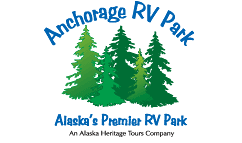
Table of Contents
Print This Page
Email This Page
Email Newsletter
Text-Only Version


ATHABASCANS– The Athabascans traditionally lived in Interior Alaska, an expansive region that begins south of the Brooks Mountain Range and continues down to the Kenai Peninsula. There are eleven linguistic groups of Athabascans in Alaska. Athabascan people have traditionally lived along five major river ways: the Yukon, the Tanana, the Susitna, the Kuskokwim, and the Copper river drainages. Athabascans were highly nomadic, traveling in small groups to fish, hunt and trap.
Today, Athabascans live throughout Alaska and the Lower 48, returning to their home territories to harvest traditional resources. The Athabascan people call themselves ‘Dena,’ or ‘the people.’ In traditional and contemporary practices Athabascans are taught respect for all living things. The most important part of Athabascan subsistence living is sharing. All hunters are part of a kin-based network in which they are expected to follow traditional customs for sharing in the community.
YUP’IK AND CUP’IK– The southwest Alaska Natives are named after the two main dialects of the Yup’ik language, known as Yup’ik and Cup’ik. The estimated population, at the time of contact, was: Nunivak 500, Yukon-Kuskokwim 13,000 and Bristol Bay 3,000. The Yup’ik and Cup’ik still depend upon subsistence fishing, hunting and gathering for food. Elders tell stories of traditional ways of life, as a way to teach the younger generations survival skills and their heritage.
INUPIAQ AND SAINT LAWRENCE ISLAND YUPIK– The Inupiaq and the St. Lawrence Island Yupik People, or “Real People,” are still hunting and gathering societies. They continue to subsist on the land and sea of north and northwest Alaska. Their lives continue to evolve around the whale, walrus, seal, polar bear, caribou and fish.
The north and northwest region of Alaska is vast. The land and sea are host to unique groups of people. To the people of the north, the extreme climate is not a barrier, but a natural realm for a variety of mammals, birds and fish, gathered by the people for survival.
ALEUT & ALUTIIQ– The Aleut and Alutiiq peoples are south and southwest Alaska, maritime peoples. The water is our living, whether it’s the creeks and rivers near villages, the shore outside or the vast waters of the North Pacific and Bering Sea. Knowledge of these resources and skill in harvesting them define the cycle of life in a village. The intensity of the weather that travels through our islands governs activities more than any other factor.
The Aleut and Alutiiq cultures were heavily influenced by the Russians, beginning in the 18th century. The Orthodox Church is prominent in every village, Russian dishes are made using local subsistence food, and Russian words are part of common vocabulary although two languages, Unangax and Sugcestun, are our indigenous languages.
EYAK, TLINGIT, HAIDA & TSIMSHIAN– The Eyak, Tlingit, Haida and Tsimshian share a common and similar Northwest Coast Culture with important differences in language and clan system. Anthropologists use the term “Northwest Coast Culture” to define the Eyak, Tlingit, Haida and Tsimshian cultures, as well as that of other peoples indigenous to the Pacific coast, extending as far as northern Oregon. The Eyak, Tlingit, Haida and Tsimshian have a complex social system consisting of moieties, phratries and clans. Eyak, Tlingit and Haida divide themselves into moieties, while the Tsimshian divide into phratries. The region from the Copper River Delta to the Southeast Panhandle is a temperate rainforest with precipitation ranging from 112 inches per year to almost 200 inches per year. Here the people depended upon the ocean and rivers for their food and travel.Although these four groups are neighbors, their spoken languages were not mutually intelligible.Eyak occupied the lands in the southeastern corner of Southcentral Alaska. Their territory runs along the Gulf of Alaska from the Copper River Delta to Icy Bay. Oral tradition tells us that the Eyak moved down from the interior of Alaska via the Copper River or over the Bering Glacier. Until the 18th century, the Eyak were more closely associated with their Athabascan neighbors to the north than the North Coast Cultures.Traditional Tlingit territory in Alaska includes the Southeast panhandle between Icy Bay in the north to the Dixon Entrance in the south. Tlingit people have also occupied the area to the east inside the Canadian border. This group is known as the “Inland Tlingit”. The Tlingits have occupied this territory, for a very long time. The western scientific date is of 10,000 years, while the Native version is “since time immemorial.”The original homeland of the Haida people is the Queen Charlotte Islands in British Columbia, Canada. Prior to contact with Europeans, a group migrated north to the Prince of Wales Island area within Alaska. This group is known as the “Kaigani” or Alaska Haidas. Today, the Kaigani Haida live mainly in two villages, Kasaan and the consolidated village of Hydaburg.The original homeland of the Tsimshian is between the Nass and Skeena Rivers in British Columbia, Canada, though at contact in Southeast Alaska’s Portland Canal area, there were villages at Hyder and Halibut Bay. Presently in Alaska, the Tsimshian live mainly on Annette Island, in (New) Metlakatla, Alaska in addition to settlements in Canada.For further information on the history of Alaska, please visit the Alaska Native Heritage Center.
[ Back to ‘About Alaska’ ]